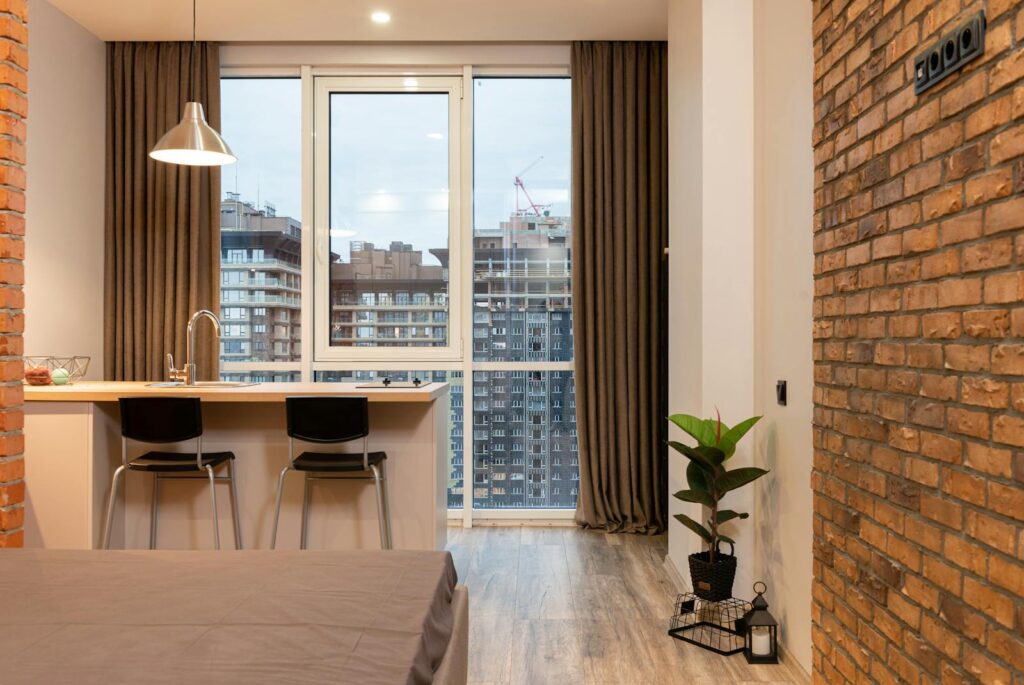Hybrid flooring and laminate flooring differ primarily in their composition. Hybrid flooring combines the best features of vinyl and laminate, featuring a rigid core for durability, water resistance, and a realistic wood look. On the other hand, laminate flooring consists of a particleboard core with a photographic layer and a protective top layer. While laminate is budget-friendly, hybrid offers enhanced water resistance and durability, making it a preferred choice for areas with high moisture.

Flooring plays a crucial role in the aesthetics and functionality of a space, and with the myriad options available today, it’s essential to understand the differences between them. Hybrid and laminate flooring are two popular choices, each with its unique features and advantages.
Composition and Construction
Hybrid and laminate flooring are popular choices for residential and commercial spaces due to their durability, versatility, and easy maintenance. Here’s a breakdown of their composition and construction:
Laminate flooring typically consists of four layers
- Wear Layer: This is the topmost layer, designed to resist scratches, stains, and fading. It’s usually made of clear melamine resin.
- Decorative Layer: Below the wear layer is the decorative layer, which features a high-resolution image of wood, stone, or other materials. This layer gives laminate flooring its aesthetic appeal.
- Core Layer: The core layer provides stability and structural integrity to the flooring. It’s usually made of high-density fiberboard (HDF) or medium-density fiberboard (MDF). HDF is more commonly used due to its greater strength and moisture resistance.
- Backing Layer: The bottommost layer serves as a moisture barrier and provides stability. It’s typically made of melamine resin or paper.
These layers are fused together through a high-pressure lamination process, hence the name “laminate” flooring.
Hybrid Flooring:
Hybrid flooring, also known as rigid core flooring, is a newer innovation that combines the best features of laminate and vinyl flooring. Its construction typically includes.
- Wear Layer: Similar to laminate flooring, hybrid flooring features a durable wear layer that protects against scratches, stains, and fading. It’s usually made of clear PVC (polyvinyl chloride) or polyurethane.
- Printed Layer: Beneath the wear layer is the printed layer, which contains a high-definition image of wood, stone, or other materials to mimic the appearance of natural materials.
- Rigid Core: The core layer of hybrid flooring is what sets it apart from traditional laminate flooring. It’s made of a rigid material such as stone plastic composite (SPC) or wood plastic composite (WPC). This core layer provides exceptional stability, durability, and water resistance, making hybrid flooring suitable for areas prone to moisture.
- Underlayment (Optional): Some hybrid flooring products come with an attached underlayment layer for added comfort and sound absorption. However, this layer may be optional depending on the specific product.
Hybrid flooring is typically installed as a floating floor, meaning the planks are not directly glued or nailed down to the subfloor. Instead, they interlock or click together, making installation relatively quick and easy.
Visual Appeal and Aesthetics
Both hybrid and laminate flooring excel in mimicking the natural beauty of wood. Hybrid flooring, with its advanced technology, can closely replicate the intricate details of real wood, providing a luxurious and authentic look. Laminate flooring, relying on high-quality photographs, offers a convincing wood pattern but may have slight variations compared to hybrid flooring.
Water Resistance
Hybrid flooring stands out for its exceptional water-resistant properties, making it a top choice for areas prone to moisture and spills. The key to its water resistance lies in the construction of the rigid core, typically made of materials like limestone or polymer. This rigid core not only provides stability and durability but also acts as a formidable barrier against water penetration.
Hybrid flooring takes a step beyond traditional laminate by incorporating advanced water-resistant technologies. The rigid core is inherently waterproof, preventing water from seeping through and causing damage to the floor. This makes hybrid flooring a suitable option for spaces like kitchens, bathrooms, and basements, where exposure to water is more frequent.
The enhanced water resistance of hybrid flooring makes it particularly well-suited for environments with high humidity or moisture levels. Unlike some flooring options that may warp or swell when exposed to water, hybrid flooring maintains its structural integrity, ensuring a long-lasting and visually appealing floor even in challenging conditions.
Laminate flooring, while offering various benefits, does not boast the same level of water resistance as hybrid flooring. Its core is typically composed of high-density fiberboard (HDF) or particleboard, materials that are susceptible to damage when exposed to excessive moisture.
Laminate flooring has a limited degree of water resistance due to its core composition. While it may withstand minor spills and regular cleaning, it is not impervious to water. Prolonged exposure to moisture can lead to swelling, warping, or cupping of the laminate planks, compromising the structural integrity and aesthetics of the floor.
When considering laminate flooring, it’s crucial to assess the specific environment where it will be installed. While laminate can be a cost-effective and visually appealing choice for dry or low-moisture areas such as living rooms or bedrooms, it may not be the best option for spaces with a higher risk of water exposure.
Durability and Longevity
The rigid core in hybrid flooring contributes significantly to its durability. This type of flooring can withstand high-traffic areas, making it a long-lasting choice for both residential and commercial spaces.
Laminate flooring, while durable, may have limitations due to its particleboard core. It is well-suited for moderate traffic areas, and proper maintenance is crucial to ensure its longevity.
Cost Comparison
Hybrid flooring, offering a combination of advanced features, tends to be priced higher than laminate. However, the additional cost may be justified by the enhanced durability, water resistance, and realistic wood appearance.
Laminate flooring is often chosen for its budget-friendly nature. It provides a cost-effective solution for those seeking an aesthetically pleasing floor without breaking the bank.
Read More




